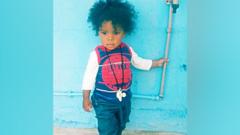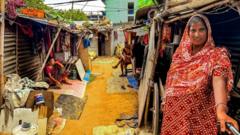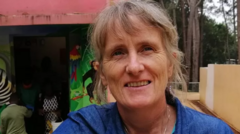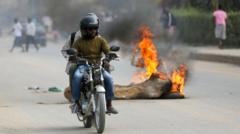As families mourn the devastating losses from gang-related violence in Cape Town, local leaders work tirelessly to broker peace and offer rehabilitation, amid a backdrop of generational trauma and systemic neglect.
The Silent Struggle: Lives Lost Amid Cape Town's Gang Warfare

The Silent Struggle: Lives Lost Amid Cape Town's Gang Warfare
Cape Town's Cape Flats bear the scars of gang violence, claiming innocent lives and challenging community resilience.
In the shadows of Cape Town’s notorious Cape Flats, a legacy of violence and grief continues to unfold. The tragedy struck Devon and Undean Koopman’s home four months ago when their four-year-old son, Davin, was killed in a gang shootout. Their heartbreaking story reflects a grim reality faced by many families who have lost loved ones in this ongoing battle against gang warfare. As Devon stands against the wall of their modest home, he points to the bullet holes that mark a place where a child should have felt safe. This loss is compounded by the earlier death of Davin's twelve-year-old sister, Kelly Amber, also an innocent victim of rival gang violence.
Three decades after apartheid's end, Cape Flats remains plagued by crime, caused by systemic neglect and a lack of opportunities for its residents. The Western Cape is notorious for its high rates of gang-related murders, despite government efforts to establish special police units aimed at reducing the violence. These murders are more than statistics; they are reflections of a deeply rooted cycle of poverty and despair.
"The gangs are embedded within the community, providing services that the state fails to deliver," states Gareth Newham of the Institute for Security Studies. This troubling reality means that gangs are often viewed as the only source of social support for the impoverished local population.
Beyond the grim statistics, there are glimmers of hope. Pastor Craven Engel, operating just miles away from the Koopman family, dedicates his life to mediating peace and addressing the root causes of gang violence. He recognizes the shifting landscape of gang recruitment, where children as young as eight are drawn into a life of crime, often perpetuated by familial ties.
Engel's efforts to foster conflict resolution are tireless; he reaches out to gang leaders, urging them to consider peace amidst hostility. Yet promises of ceasefire often dissipate quickly, as gang loyalty and desires for power overshadow the drive for harmony. Engel also emphasizes the link between drug addiction and gang proliferation, noting how the local economy relies heavily on the drug trade.
Encouragement through rehabilitation is also part of Engel's mission, as he helps individuals, like Nando Johnston—a gang member desiring a way out—rebuild their lives. Johnston’s story, supported by his mother’s dreams for his future, showcases a journey that many undertake to escape the grip of gang life. Yet the path to change is fraught with challenges, as Johnston himself expresses the harsh reality of gang-orientated environments.
While pockets of hope exist, the brutal reality remains that many families, like the Koopmans, continue to navigate the dangers of life in the Cape Flats. The barriers to safety are compounded by distrust of the police, known for their inconsistency and corruption, leaving communities to fend for themselves.
Pastor Engel captures the urgency of the situation: "No one will come to save us. We must build our own resilience and hope." The cycle of violence may feel insurmountable, but the community's drive, amidst unspeakable loss, hints at a flicker of hope for a brighter future.



















